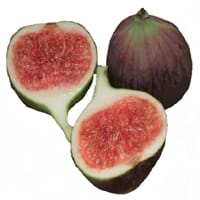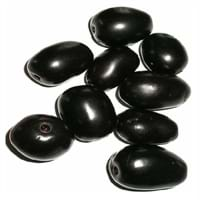Health Benefits
Cancer prevention, Controls blood pressure, Heart care, Increase in haemoglobin, Prevents constipation, Prevents macular degeneration, Reduces nervous tension
Cancer prevention, Heart care, Increase in haemoglobin, Regulates Blood Sugar, Ulcer prevention
General Benefits
Controls blood pressure, Helps in weight loss, Maintains healthy cholesterol level, Strengthens bones
Boosts immune system, Digestive aid, Fights against infections, Strengthens bones
Skin Benefits
Brightens and lightens complexion, Hydrates skin, Skin rejuvenation, Treatment of acne
Brightens and lightens complexion, Skin cleansing, Skin rejuvenation, Treatment of acne, Treatment of dark spots
Hair Benefits
Good conditioner, Regulates hair growth, Softening mask
Promotes longer and healthier hair, Protects hair
Allergy Symptoms
Abdominal pains, Anaphylaxis, Coughing, Headaches, Hives, Itching, Nasal congestion, Skin rash, Sneezing, Sore throat, Swelling of hands
Abdominal pains, NA
Side Effects
Allergic reaction, Skin rash, Possibly unsafe during pregnancy
Decrease in blood sugar levels, Allergic reaction, Throat irritation, Throat swelling, Possibly unsafe during pregnancy
Best Time to Eat
Best if taken as a breakfast (or empty stomach), Don't consume at night and before bed, Morning time (before lunch)
As a snack in the late afternoon, Don't consume at night and before bed, Eat the fresh ones, avoid mixing with any other foods, don't eat after meal., Morning time (before lunch), Strictly avoid empty stomach
Vitamin B5 (Pantothenic Acid)
Not Available
Vitamin B9 (Folic acid)
Not Available
Vitamin C (Ascorbic Acid)
Vitamin E (Tocopherole)
Not Available
Vitamin K (Phyllochinone)
Not Available
Lutein+Zeaxanthin
Not Available
Calories in Fresh Fruit with Peel
Calories in Fresh Fruit without Peel
Not Available
Not Available
Calories in Frozen Form
Not Available
Calories in Dried Form
Not Available
Calories in Canned Form
Not Available
Type
Tree fruit
Tree fruit, Tropical
Season
Summer, Winter
Monsoon, Summer
Varieties
Abyad, Adriatic, Alma, Atreano, Bataglia, Black Bethlehem, Black Madeira, Black Mission, Brown Turkey, Sierra, Calimyrna, Kadota, Deanna, Figoin and Hardy Chicago Fig
Ram Jarnun and Paras
Color
Green, Purple, Red
Black, Magenta, Purple
Taste
Sweet
Astringent, Sweet
Origin
Western Asia
Bangladesh, India, Indonesia, Malaysia, Nepal, Pakistan, Philippines, Sri Lanka
Soil Type
Clay, Limestone, Loam, Sandy
Loam, Sandy loam, Well-drained
Climatic Conditions
Dry, Warm
Humid, Rainfall
Facts about
- Fig tree is considered as a symbol of abundance, fertility and sweetness.
- The fig is made up of 55% of natural sugar so they are the sweetest fruits.
- Figs are used as a fat substitute in recipes.
- Wood of jambul tree is water-resistant wood & is used in railroads and to implement engines in the well.
- In Indian mythology, it is said that Jambul fruit was revered by Buddha.
- Jambul has a huge importance in Ayurveda.
Top Producer
Turkey
India
Other Countries
Albania, Algeria, Brazil, Egypt, Iran, Morocco, Syria, Tunisia, United States of America
Bangladesh, Indonesia, Malaysia, Nepal, Pakistan, Philippines, Sri Lanka
Top Importer
France
Not Available
Top Exporter
Turkey
India
Botanical Name
Ficus carica
Syzygium cumini
Synonym
Not Available
Eugenia cumini
Subkingdom
Tracheobionta
Tracheobionta
Division
Magnoliophyta
Magnoliophyta
Class
Magnoliopsida
Magnoliopsida
Subclass
Alismidae
Rosidae
Family
Moraceae
Myrtaceae
Species
Ficus carica
S. cumini
Generic Group
Mulberry
Not Available
Difference Between Fig and Jambul
We might think that Fig and Jambul are similar with respect to nutritional value and health benefits. But the nutrient content of both fruits is different. Fig and Jambul Facts such as their taste, shape, color, and size are also distinct. The difference between Fig and Jambul is explained here.
The amount of calories in 100 gm of fresh Fig and Jambul with peel is 74.00 kcal and 60.00 kcal and the amount of calories without peel is Not Available and Not Available respectively. Thus, Fig and Jambul belong to Low Calorie Fruits and Low Calorie Fruits category.These fruits might or might not differ with respect to their scientific classification. The order of Fig and Jambul is Rosales and Myrtales respectively. Fig belongs to Moraceae family and Jambul belongs to Myrtaceae family. Fig belongs to Ficus genus of Ficus carica species and Jambul belongs to Syzygium genus of S. cumini species. Beings plants, both fruits belong to Plantae Kingdom.









